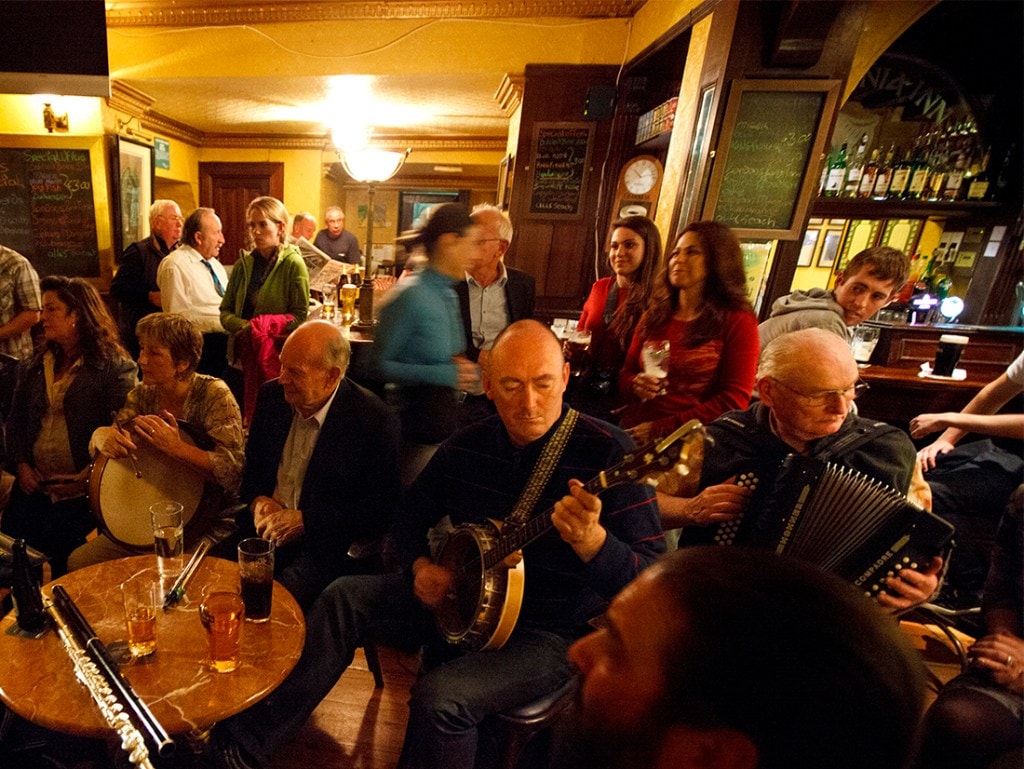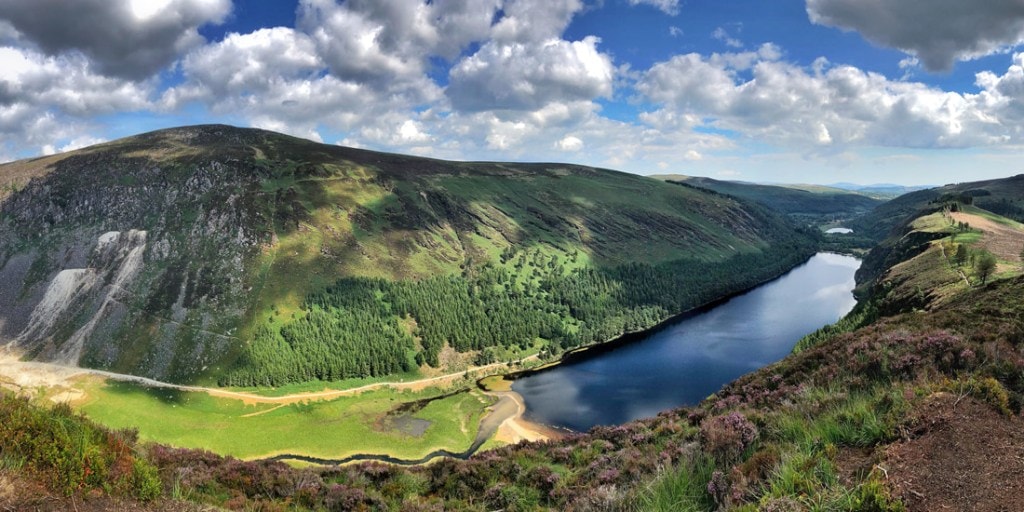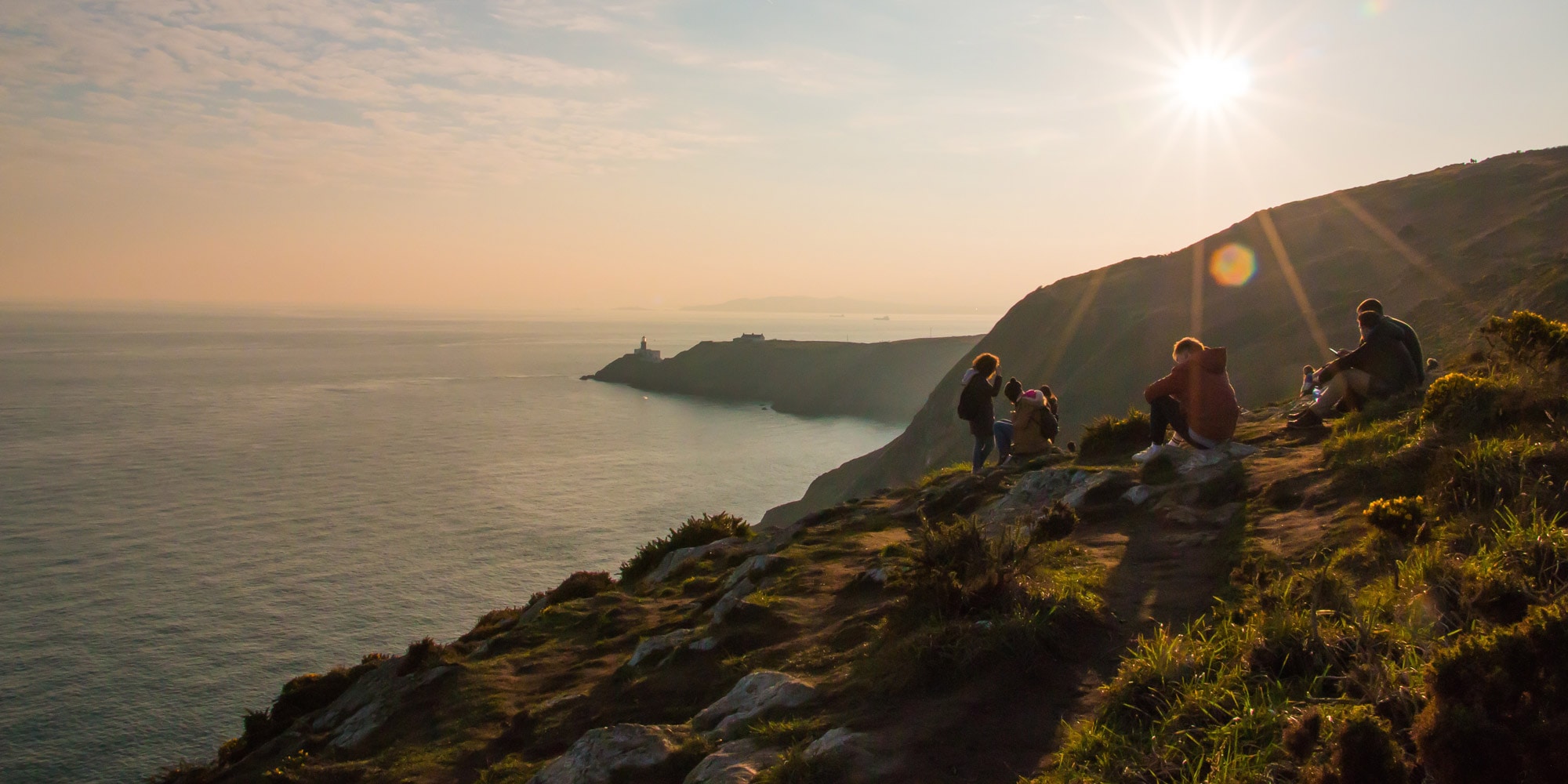Ireland’s lively capital originated as a Viking settlement around 840 A.D., but just upriver was an Irish settlement called Baile Átha Cliath. Today, Irish speakers call the city Áth Cliath, and you’ll see that name on signs all over town.
About 1.3 million people live in the Dublin metro area, and while a small city, this urban center brims with the arts, literature, music, Irish and international cuisine, famed local libations, nightlife and plenty of adventures. A new bike-share program and the city’s prolific bike lanes make it easy to get around without a car, and the healthy economy has brought an international flair to the capital.
Once you’ve had your fill of city life, check out our guide to the best outdoor activities to help you get out and explore the rest of the Emerald Isle.
Temple Bar
Both an actual bar and a neighborhood, this charming network of narrow cobblestone streets is crowded with historic buildings, shops selling local artisanal wares, galleries and pubs. It’s also famed for rowdy nightlife that lasts deep into the wee hours.

Replicated around the world, Irish pubs are an excellent place to enjoy a drink and some local music.
Phoenix Park
Pedal a bike-share up the Liffy’s bike lanes to Phoenix Park (interestingly, the name is not from the mythic bird, but derived from the Irish words, fionn uisce, meaning clear water). The largest enclosed (it has low-walled borders) city park in Europe—and recipient of the International Large Urban Parks Gold Award—it’s twice the size of New York’s Central Park.
Originally a 1600s royal hunting ground, it was opened to the public in 1747, and today is a massive urban oasis of green fields, woods, trails, gardens, bike lanes, a zoo, cricket and polo fields and historical monuments beginning with a 5,500-year-old megalithic tomb. A cherished, protected herd of fallow deer freely roam the park to boot.
Saint Patrick’s Cathedral
With towering stone columns, intricate floors and stained glass windows, Saint Patrick’s Cathedral is a Dublin landmark and Ireland’s largest church.
Howth Head
This peninsula (and Dublin suburb) juts out into the Irish Sea to form the northern border of Dublin Bay. It’s also home to some of the city’s best running and hiking trails such as the Howth Summit/Baily Lighthouse Cliff Walk, a 1-mile, point-to-point trek, which starts near the Summit Inn and ends at its namesake light station.
St. Stephen’s Green and Grafton Street
A pedestrian shopping area, Grafton Street is famed for high-end shops, where you can find Irish crafts, jewelry, rare books, cheeses galore and more. If it’s a sunny day, grab some picnic food and keep on going right into St. Stephen’s Green, a cherished garden park in the middle of the city where Dubliners flock during spells of nice weather.
The Wicklow Way

Ireland’s Wicklow Mountains. (Photo Credit: Bart Vermeiren)
You’ll find the trailhead for this iconic long-distance hiking route in Marlay Park in the suburbs south of downtown. It typically takes between five and seven days to tackle the entire route, which ends 80 miles away in the rolling and rugged Wicklow Mountains, but you can hike as much or as little as you like.
Museums
Dublin has its share of excellent museums, a few of which stand out as unique to Dublin. The acclaimed Little Museum of Dublin tells the history of the city; Dublin Writer’s Museum celebrates the rich, internationally renowned Irish literary tradition; and Kilmainham Gaol provides a fascinating look into the darker side of recent Irish history and under British rule.
The Old Library at Trinity College
A visit to the Old Library is a must in order to see the Book of Kells. This Irish cultural treasure is the world’s most famous illustrated medieval manuscript.
